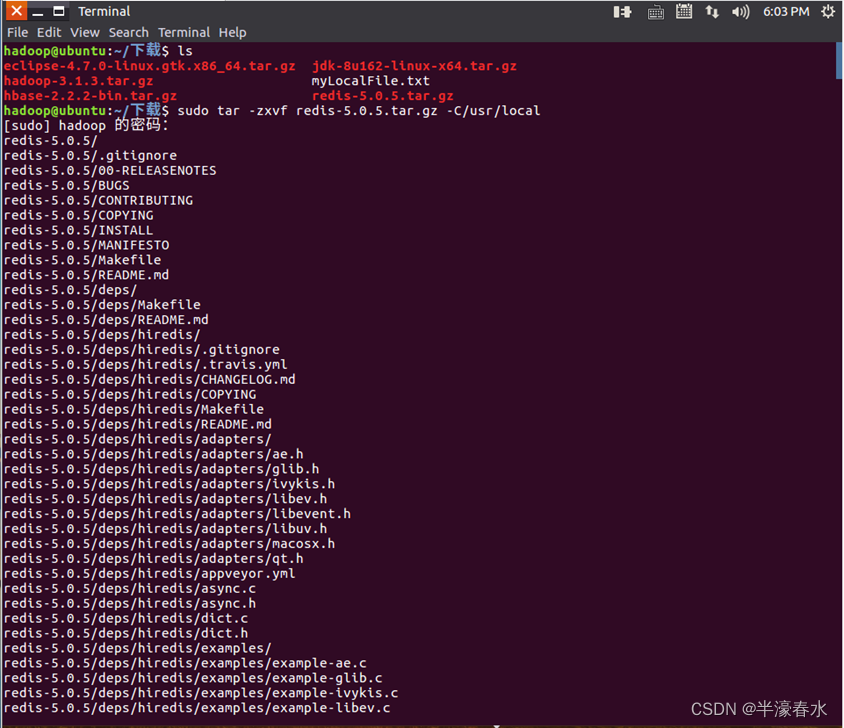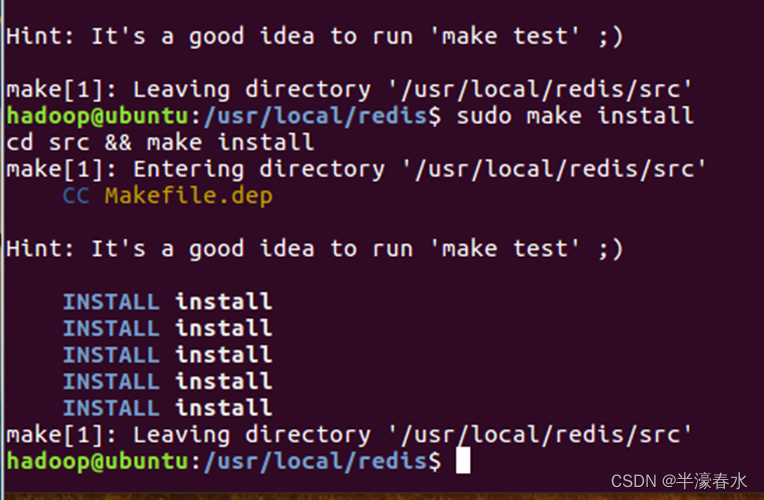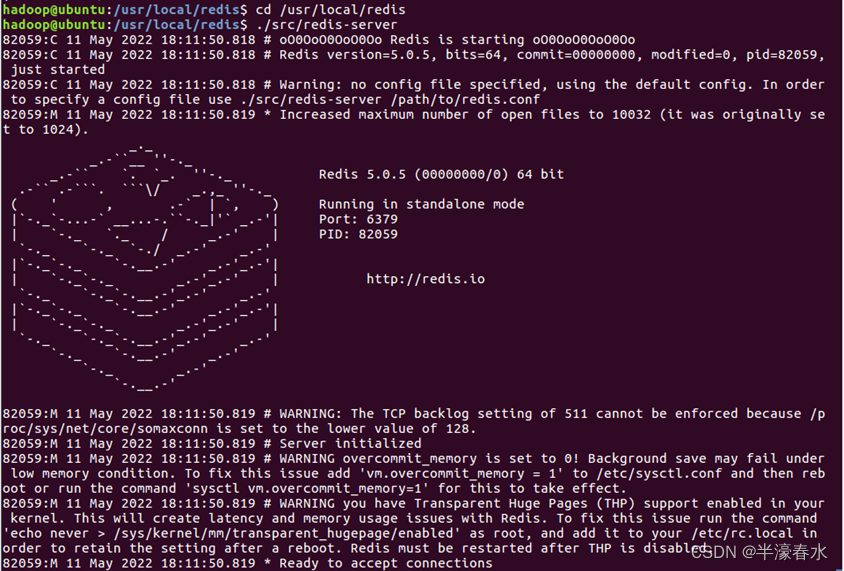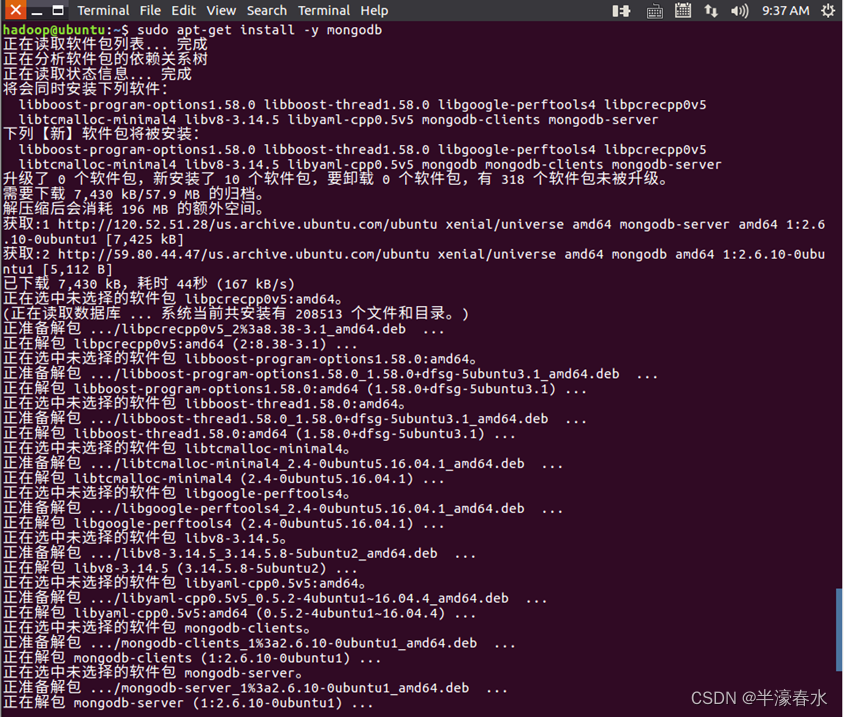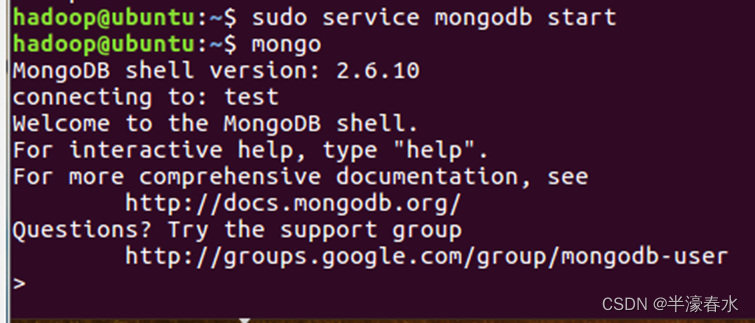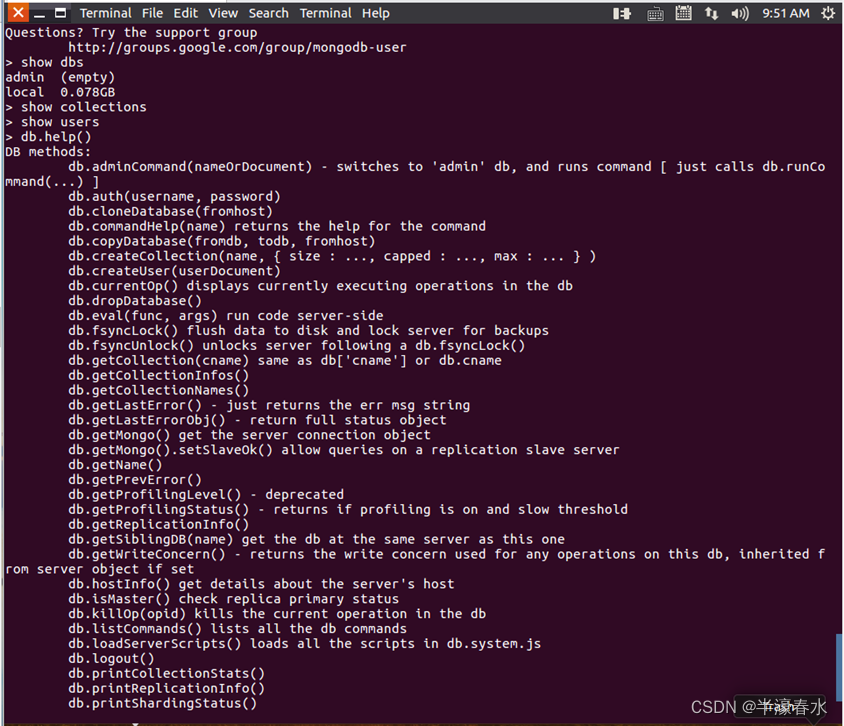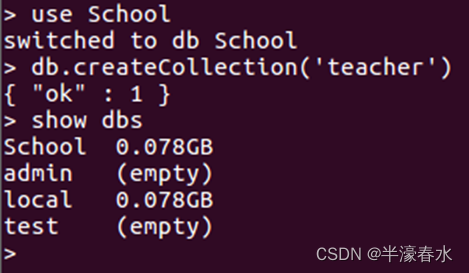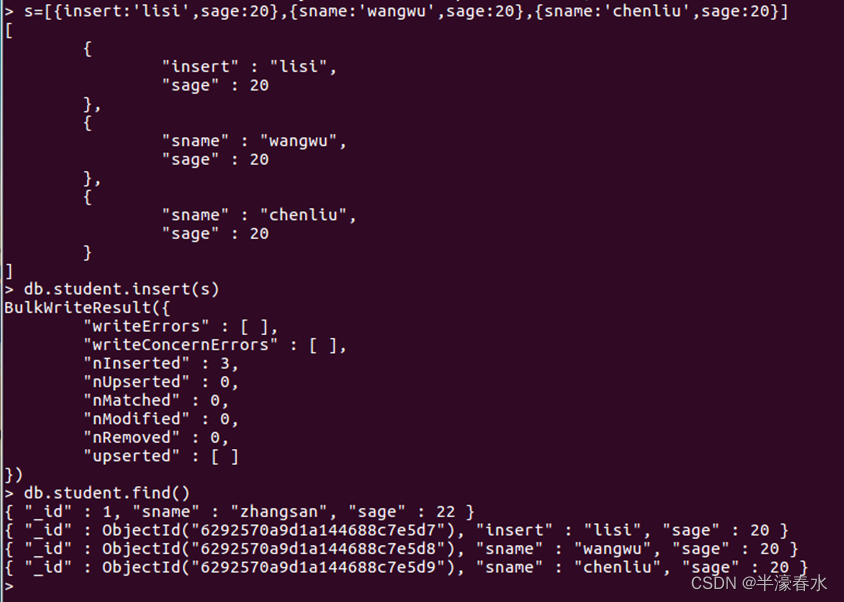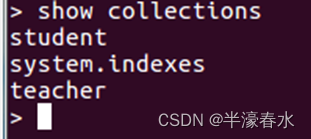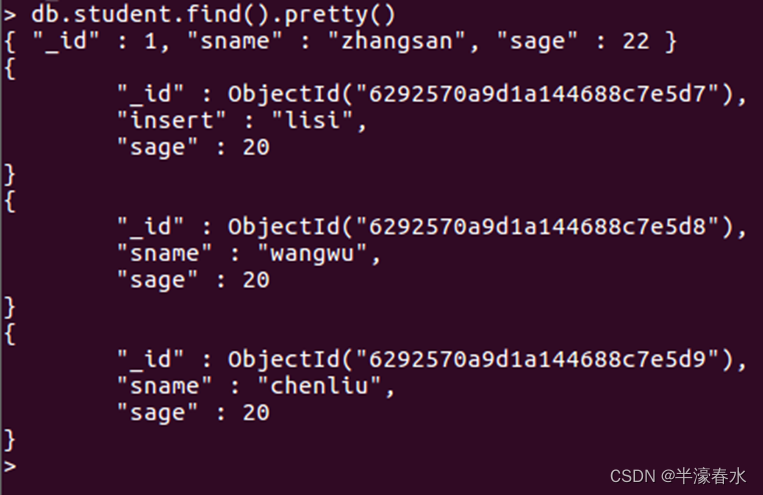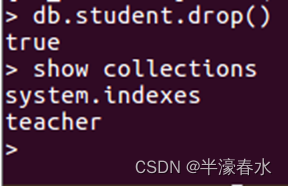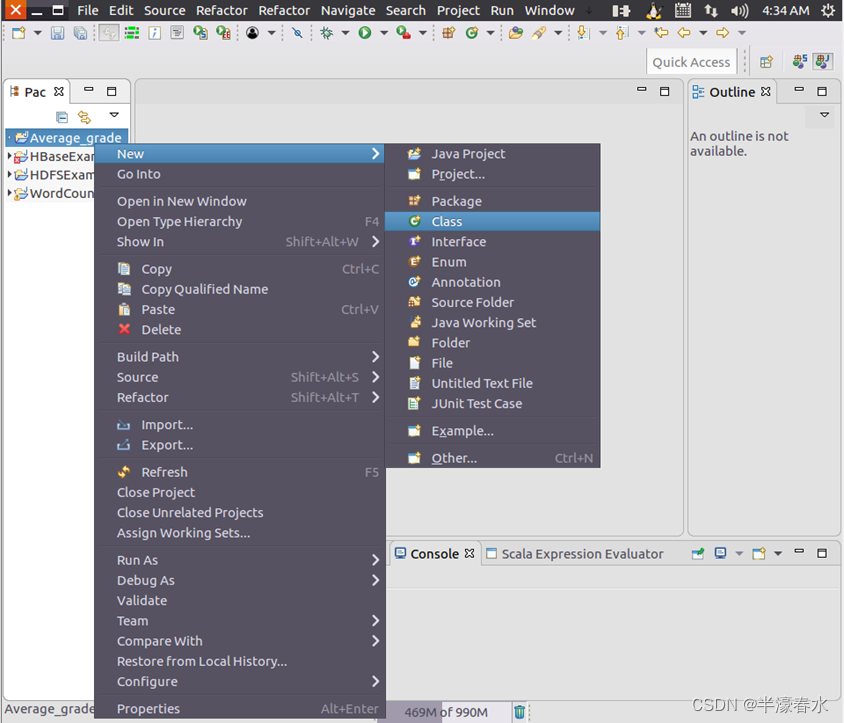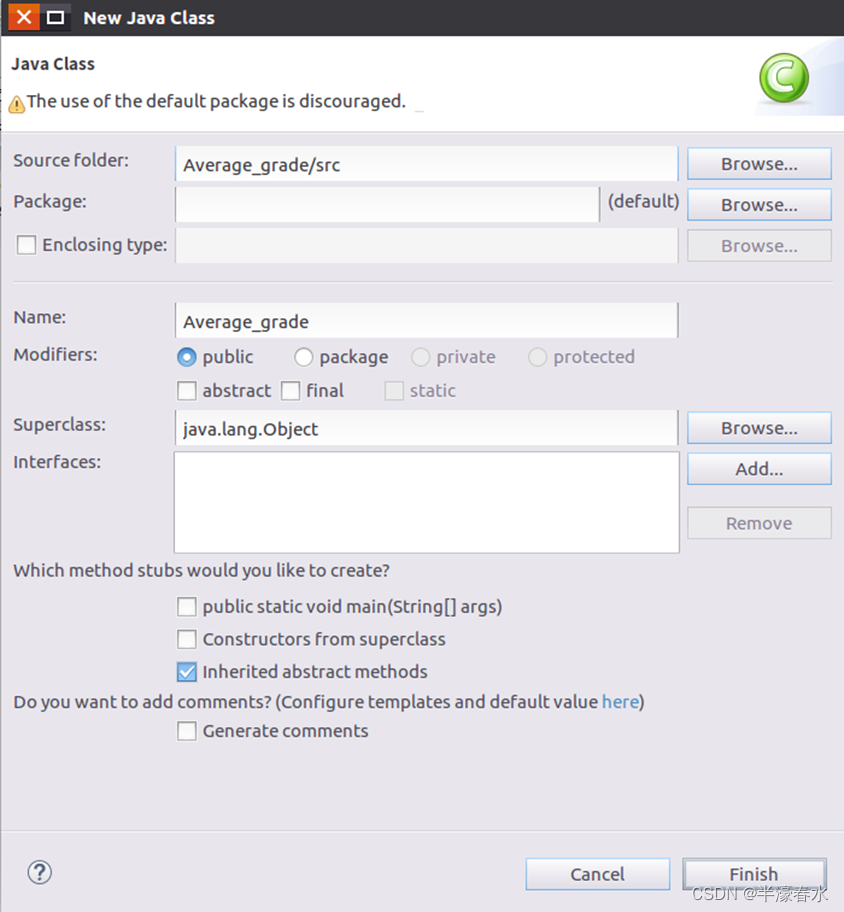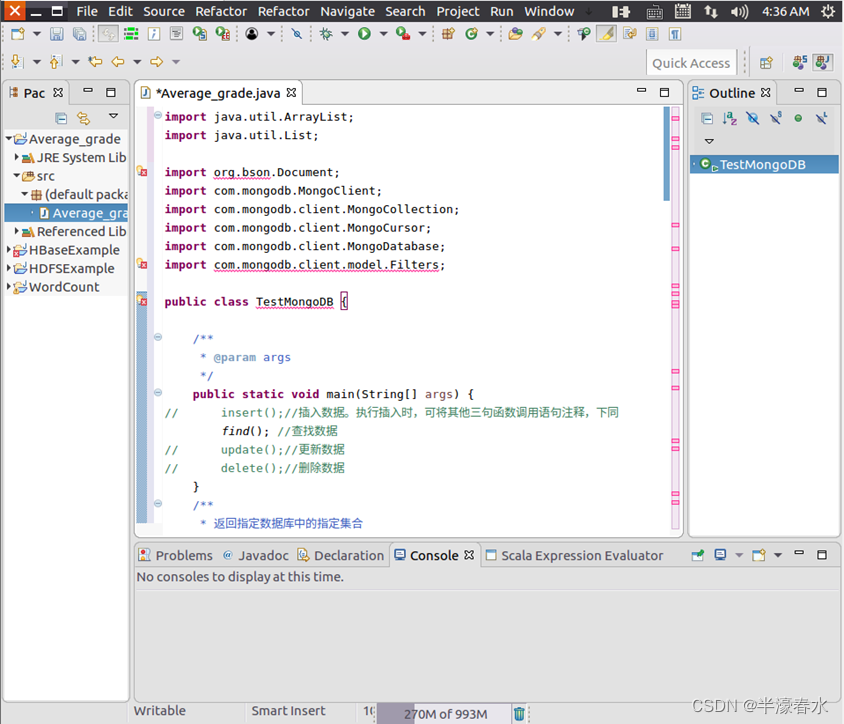(1) Completed
Redisinstallation and use. Complete database insertion, deletion, and query.
RedisIt is a key-value (key-value) storage system, that is, a key-value pair non-relational database, andMemcachedsimilar, which is currently being adopted by more and more Internet companies.RedisAs a high-performance key-value database, it not only makes up formemcachedthe deficiency of this type of key-value storage to a large extent, but also can play a very good supplementary role to relational databases in some occasions.RedisProvidesPython,Ruby,Erlang,PHPclients, which are very convenient to use.
①Log in ashadoopa userubuntu kylin,windowsuse the system to save the file transferFileZillain compressed format in the directory, and now unzip the package to .redis-5.0.5.tar.gz“/home/hadoop/下载”/usr/local
②Decompress
redis-5.0.5.tar.gzthe file and save it to“/usr/local/”the directory.
③Rename itredis-5.0.5toredis, andredisgive the directory permission tohadoopthe user.
④Enter“/usr/local/redis”the directory, enter compile and installRedis.
⑤TheRedisinstallation has been completed, now startRedisthe server.
⑥Create a new terminal and startRedisthe client. After the client connects to the server,“127.0.0.1:6379>”the command prompt information will be displayed, indicating thatIPthe address of the server is127.0.0.1and the port is6379. Now you can perform simple operations, such as setting the key to”hello”the value”world”, and fetching the value corresponding”hello”to . At this point,Redisthe installation and operation are successful, and then the database can be operatedRedis.
RedisThe database stores data in the form of . When<key,value>storing the data in the table into the database, the determination method of the sum is as follows :Rediskeyvalue
* key=表名:主键值:列名
* value=列值
⑦Insert data: To
Redisinsert a piece of data, you only need to design the sum firstkey,valueand then usesetthe command to insert the data. For example,Courseto insert a new course "Big Data" into the table, 4 credits, the operation commands and results are shown in the figure below.
⑧Delete data:RedisThere is a special command to delete data—delcommand, and the command format is "delkey". Therefore, if you want to delete the previously added course "Big Data", you only need to enter the command“del Course:8:Cname”, as shown in the figure below, when you enter it“del Course:8:Cname”, it will return“1”, indicating that a piece of data has been successfully deleted.
⑨Query data:RedisThe easiest way to query is to usegetcommands. Entergetthe command query, if the output is empty, it means that the data is deleted successfully.
(2)
MongoDBInstallation and use.Complete
MongoDBbasicshellcommands.MongoDBIt is a database based on distributed file storage, between relational databases and non-relational databases. It is the most functional among non-relational databases and most similar to relational databases. The data structure it supports is very loose and is a similarjsonformatbson, so it can store more complex data types.MongoThe biggest feature is that the query language it supports is very powerful, and its syntax is somewhat similar to object-oriented query language, which can almost realize most of the functions similar to single-table query of relational database, and also supports indexing of data.
①Usingapt-getcommands for online installationMongoDBcan avoid many inexplicable problems.
The command linesudo apt-get install mongodbcan be downloaded and installedMongoDB. The default installed version isMongoDB 2.6.10, butMongoDBit has been upgraded to3.2.8. You can install the version by adding software sources3.2.8.
a. First open the terminal, import the publickeyto the package manager
b. CreateMongoDBa list of files.
c. Update the package manager and installMongoDB.
d.MongoDBAfter the installation is complete, enter the following command in the terminal to viewMongoDBthe version.
②MongoDBstart and stop.
③Enter theMongoDBcommandshellmode. The database connected by default istestthe database. Before that, make sure that it has been startedMongoDB, otherwise an error will occur. After starting, the successful operation is as follows.
④Common operation commands
Database-related
show dbs: display database list
show collections: display collections in the current database (similar to tables in relational databasestable)
show users: display all users
use yourDB: switch current database toyourDB
db.help(): display database operation commands
db.yourCollection.help(): display collection operation commands, whichyourCollectionis the collection name
MongoDBThere is no command to create a database. If you want to create a“School”database, runuse Schoolthe command first, and then do some operations (such as: create a collectiondb.createCollection('teacher')), so that you can create a“School”database named .
⑤Taking aSchooldatabase as an example,Schoolcreate two collectionsteacherand sums in the databasestudent, andstudentperform basic operations of addition, deletion, modification and query on the data in the collection (a collectionCollectionis equivalent to a table in a relational databasetable).
a. Switch toSchoolthe database (Switch toSchoolthe database.MongoDBThere is no need to pre-createSchoolthe database, it will be automatically created when it is used)
b. CreateCollection(create an aggregate collection.MongoDBIn fact, when inserting data, the corresponding collection will also be automatically created, no pre-defined collection is required )
c. Similar to database creation,MongoDBcollections are automatically created when data is inserted. There are two ways to insert data:insertandsave.
Insert data successfully
_idSame, update data
_idSame, insert failed, no operation.d. The structure of the added data is loose, as long as
jsonthe format is acceptable, the column attributes are not fixed, and the added data shall prevail. Define the data first and then insert, you can insert multiple pieces of data at one time.
e. After running the above example,
studentit has been automatically created, indicating thatMongoDBit does not need to be pre-defined, and it will be automatically createdcollectionafter the first data insertion .collection
⑥ Find data
a.db.student.find()Query all records. Equivalent to:select * from student
b.
db.student.find({sname: 'zhangsan'})Querysname='zhangsan'records. Equivalent to:select * from student where sname='zhangsan'
c.
db.student.find({},{sname:1, sage:1})Query the specified columnsnameandsagedata. Equivalent to:select sname,sage from student.
sname:1 means to returnsnamethe column, and the default_idfield is also returned. It can be added_id:0(meaning not to return_id) to write{sname: 1, sage: 1,_id:0}, and the default_idfield will not be returned
d.
db.student.find({sname: 'zhangsan', sage: 22})
andQuery with conditions. Equivalent to:select * from student where sname = 'zhangsan' and sage = 22
e.
db.student.find({$or: [{sage: 22}, {sage: 25}]})
orConditional query. Equivalent to:select * from student where sage = 22 or sage = 25
f.
db.youCollection.find(criteria, filterDisplay) criteria:
query condition, optionalfilterDisplay: filter and display part of the data, such as displaying specified column data, optional (when selected, the first parameter cannot be omitted, if the query condition is empty, it can be used as a placeholder{})
⑦ The query conditions
db.youCollection.update(criteria, objNew, upsert, multi )
criteria: updatefor , similar to the objects behindsql updatethe query : and some update operators (such as ), can also be understood as the following in the query . : If the record does not exist, whether to insert it or not, the default is to not insert it. : By default , only the first record found will be updated. If this parameter is true, all multiple records detected according to the condition will be updated. By default , only the first matching data is modified. Where and are required parameters, and optional parameters. , which is equivalent to: ;whereobjNewupdate$setsql updateset
upsertupdateobjNewtruefalse
multimongodbfalsefalsecriteriaobjNewupsertmultidb.student.update({sname: 'lisi'}{$set: {sage: 30}}, false, true)update student set sage =30 where sname = 'lisi'
⑧Delete data
db.student.remove({sname: 'chenliu'})Equivalent to :delete from student where sname='chenliu'
⑨Delete collection
⑩Exit
shellcommand mode
InputexitorCtrl+Cexitshellcommand mode
(3) Use
Java APIthe pairMongoDBto access.①The
Java MongoDB Driverdriverjarpackage has been downloaded and saved to’/home/hadoop/下载/’the directory.
② OpenEclipseand create a new oneJava Project.
Import the driver packagemongodb-driver-3.8.0.jar.
Create newClass Average_grade
ClearAverage_grade.javathe code inside, and then enter the completestudentcode for performing the addition, deletion, modification, and query operations of the collection in this file.
After the program runs,Consolethe running result information will be displayed in the " " panel at the bottom.
Each time the program is executed, you can return toshellthe mode to view the results. For example: Aftereclipseperforming the update operation,shellenter in the modedb.student.find(), you can viewstudentall the data of the collection.
(4) How is it different
Redisfrom traditionalMysqldatabases?①It
mysqlis a relational database, which is mainly used to store persistent data. The data is stored in the hard disk, and the reading speed is relatively slow.redisYesNOSQL, that is, a non-relational database is also a cache database, that is, the data is stored in the cache. The cache reads fast and can greatly improve the operating efficiency, but the storage time is limited.
②mysqlAs a relational database for persistent storage, the relatively weak point is that every time a request is made to access the database, there areI/Ooperations, if the database is accessed repeatedly.
First: A lot of time will be spent on repeatedly connecting to the database, resulting in too slow operation efficiency;
Second: Repeated access to the database will also lead to excessive load on the database, so the concept of caching is derived at this time.
③The cache is the buffer ( ) for data exchangecache. When the browser executes the request, it will first search in the cache, and if it exists, it will get it; otherwise, it will access the database. The advantage of caching is that the reading speed is fast.
④Theredisdatabase is a cache database, which is used to store frequently used data, so as to reduce the number of access to the database and improve operating efficiency.(5)
MongoDBWhat are the characteristics, andMysqlwhere is the difference from the database?Features:
MongodbIt is a non-relational database (nosql), which belongs to the document database. A document ismongoDBthe basic unit of data in a database. It is similar to a row in a relational database. Multiple key-value pairs are placed together in an orderly manner to form a document. The syntax is somewhat similar to an object-orientedjavascriptquery language. It is a set-oriented, free-mode document type database.
Storage method: virtual memory + persistence. Query statement: It is a uniqueMongodbquery method. Suitable scenarios: event recording, content management or blogging platform, etc.
Architecture features: High availability can be achieved through replica sets and fragmentation.
Data processing: The data is stored on the hard disk, but the data that needs to be read frequently will be loaded into the memory, and the data will be stored in the physical memory to achieve high-speed reading and writing.
Maturity and breadth: Emerging databases have low maturity.NosqlAmong the databases, they are closest to relational databases and are relatively completeDB. The applicable population is constantly growing.Difference:
MongoDBAnother biggest disadvantage is that it takes up a lot of space. When adding,MongoDBdeleting, and modifying data frequently in the database, if the record changes, such as the data size changes, some data fragments are likely to occur at this time, and fragmentation will cause As a result, one is that the index will have performance problems.
MySQLBothMongoDBare common open source databases, butMySQLthey are traditional relational databases,MongoDBwhile non-relational databases, also called document databases, are a kindNoSQLof database. They each have their own advantages, the key is to see where they are used.SQLSo the (full name ) statements we are familiar withStructured Query Languageare not applicableMongoDB, becauseSQLstatements are the standard language of relational databases.

